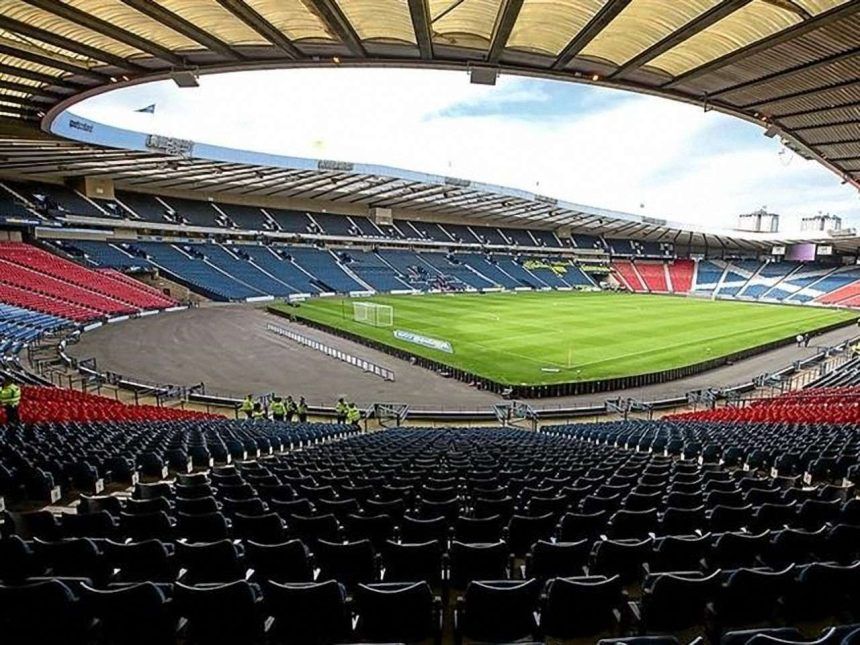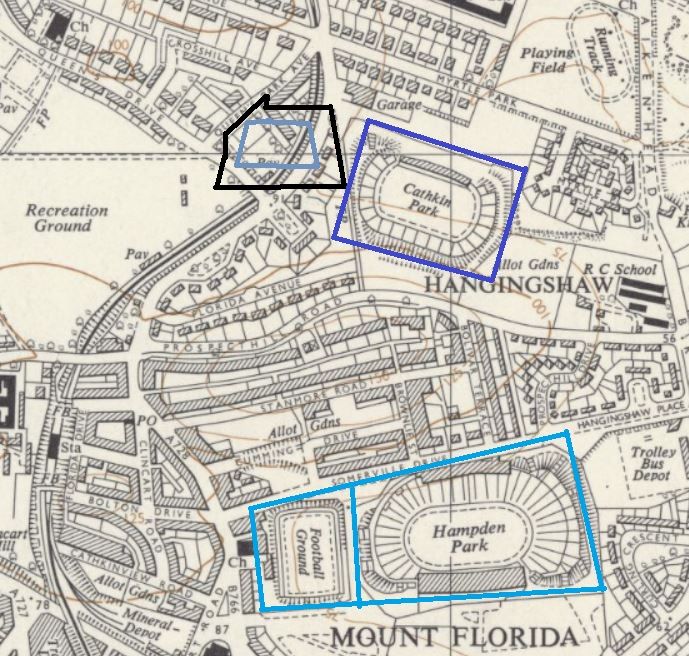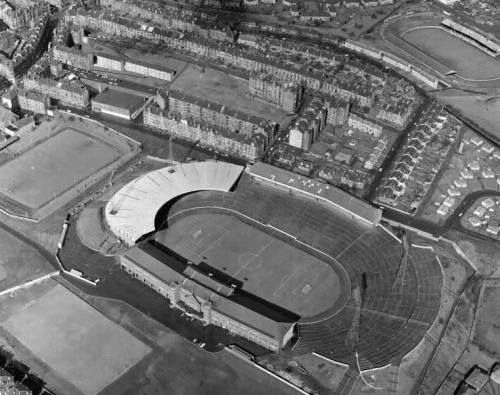The 3rd Hampden Park
(and Lesser Hampden)

There was a time when Glasgow had the three largest football stadia, in the World, Ibrox Park, Celtic Park and Hampden Park. It was not coincidence but passion. There was a point when the third of the trio had the record for the largest match attendance ever; the year was 1937, the number was almost 150,000, still the European record. The match was Scotland-England. The result, after falling one behind, was an eventual 3-1 home-win. A hundred and thirty thousand plus went home happy.
It is also unquestionable that Hampden Park remains one of the great stadia of the World as it has been since its opening in October 1903, when the club that conceived and built it, Queen's Park, played the first game, a 3-1 victory over Celtic. However it has not been without its problems, both structural and more recently financial.
Its initial construction, begun in 1900, coincided with the 1902 Ibrox disaster. It was February. England was the visitor. The crowd was little short of 70,000 with half in the West Tribune. Designed by Archibald Leitch, who was also working on Hampden, it was given a capacity of just under 36,000, despite concerns from the architect himself, so on the day was full, as it turned out over-full. Half an hour into the game it partly collapsed. Five hundred were injured, one hundred and ninety were admitted to hospital, twenty-five died. Understandably the plans for Hampden were considerably revised but even then there were obviously concerns. Ground capacities elsewhere were slashed, albeit temporarily and even in 1909 the stadium was briefly effectively closed as more improvements were made. The reason was on this occasion a riot at the Old Firm Cup Final, which would prompt the withholding of such games until 1920. International games were suspended there until 1912.

All this had taken place whilst Queen's Park, had finally been in the First Division. Having in 1890 at first refused to be part of the Scottish League from1900 it had yielded to inclusion, the new Hampden no doubt having a part to play. In fact it was, defiantly amateur throughout and despite a couple of finishes at the foot of the table, to remain there until the Second World War with one exception, the 1922-23 season.
And coincidently or not it was in 1923 the the complex had been added to with the addition of Lesser Hampden. It was built with a capacity of 12,000 on farmland to the immediate west of the main stadium and intended for the reserve and youth teams, which previously had a pitch that was increasingly being used as a car-park.
Thus it was until 1990s. Meantime the first team had in 1948 again been relegated, regained First Division status in 1956 but dropped again after just two seasons. Moreover, when in 1975 the two division system was reorganised into three the Spiders were placed in Division Two, effectively the third tier. And there they would stay in a stadium when they needed a ground and, more importantly still, with expenses increasingly beyond their means.

The expenses were two-fold, running - and renewal. The response was to consider selling, given that Glasgow Council and the Government in London respectively withdrew help and proffered none. A public appeal kept the place open in the 1980s as finally did grants for work prompted by the Taylor and other reports in the 1990s. Re-building was in two tranches, the second finished in 1999 with ownership still retained by Queen's Park but the Scottish Football Association (SFA) having a lease on the ground until 2020.
And that is not why but when the crunch came. In 2018 with lease expiry pending the SFA canvassed its members about where future Scotland games should be played. The result was clear - Hampden - so that same year in September the same SFA announced its intention to buy the stadium from Queen's Park. The purchase was completed in August 2020 with, additionally agreement that a revamped Lesser Hampden would become the doyen club's if not spiritual then new playing home.
Redevelopment of Lesser Hampden followed rapidly; a little too hurriedly perhaps, with the historic club-house cum changing rooms, said to be a building from the original farm, knocked down without proper consultation. Other historic changes also took place. At the end of the 2021 season Queen's Park having fallen into Scotland's fourth football tier after another reorganisation that introduced the Premier League was promoted, in 2022 promoted once more and in 2023 almost promoted to the Premiership itself, all this following on from the decision in 2019 after one hundred and fifty-two years to end The Spiders' amateur status.